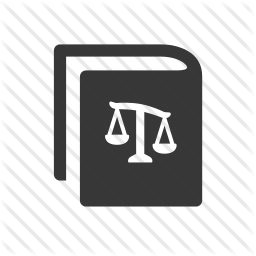In commercial relations involving Russian enterprises and citizens, bills of exchange may be used. These financial instruments are considered as a traditional way of consolidation. debt obligations - Their legal nature was enshrined in the USSR. In particular, promissory notes are common, finding demand both in business and in civil matters. In what other main varieties can bills be issued? What is the structure of related financial instruments?

What is a bill of exchange?
Before studying what a promissory note is, as well as what are its other varieties, we will study the essence of the corresponding document. The term “bill of exchange” is understood to mean a security that is issued for the purpose of certifying the debt of one business entity in relation to another, but at the same time, the rights to claim debt may be transferred by the second party to the transaction to third parties. It is not necessary to obtain the consent of the debtor.
According to some researchers, bills are among the most historically earliest types of securities. Their appearance was preceded by ordinary debt receipts. That is, their possession guarantees the receipt of money by the creditor; no other legal confirmation of the relevant preference is required. It can be noted that bills can be issued both by individuals and organizations. Technically, the corresponding payment instrument can be executed in any paper format - on letterhead or on a plain blank sheet.
Difference of bills from other securities
It is useful to consider how a bill differs from a bond similar in legal nature, which is also considered, as a rule, to be a non-personalized debt obligation.

The key criterion for distinguishing between the two noted financial instruments is the subject of debt. In the case of a bill of exchange, this is cash, less commonly, a commodity. The subject of a debt under a bond is a share in the share capital of the company. But there are other differences between the noted financial instruments:
- bonds are usually subject to registration by the state, bills are a financial instrument freer from formalities, although, of course, it can be regulated by various legal acts, such as a law on a promissory note or a bill of exchange;
- with the help of bills in some cases it is possible to carry out calculations instead of those carried out in cash, bonds are not intended for these purposes;
- The main legal mechanism for the formation of bonds is the conclusion of a contract of sale, bills of exchange - transfer by order of the current owner.
The payment instrument in question may be part of the enterprise documentation. So, if the company received a promissory note, accounting for the relevant source should be in accordance with the requirements of accounting legislation. Actually, it will be useful to consider the key legal provisions that govern the turnover of the financial instruments in question.
Regulatory legislation
The main source of law securing the legal circulation of bills in Russia is Federal Law No. 48, adopted on 02.21.1997. This law says, in particular, that the turnover of the payment instruments in question in the Russian Federation correlates with the provisions of the Convention of 06/07/1930, which establishes a uniform law on bills.Also in Federal Law No. 48 there is a clause on which the Decree of the Council of People's Commissars of the USSR should be applied on the territory of the Russian Federation. completely new to the Russian economy. It was also used in the USSR.

Article 2 of the Federal Law No. 48 says that registration and payment of a promissory note or a bill of exchange can be carried out only with the participation of citizens and legal entities registered in the Russian Federation. Corresponding activities with the participation of authorities at the federal, regional or municipal level can be carried out only in cases provided for by federal legislation. An exception is a legal relationship in which promissory notes were drawn up before the entry into force of Federal Law No. 48.
Article 3 of the Federal Law No. 48 states that interest on a bill must be accrued based on the discount rate of the Central Bank of the Russian Federation. Another noteworthy nuance regarding the circulation of the considered payment instruments, which contains the Federal Law No. 48, is that the bill (simple or transferable) should be filled out only on paper. This can be traced another difference between bills and bonds, which can also be electronic.
Let us now examine in more detail in which varieties the financial instrument in question can be represented.
Classification of Bills
There are 2 main types of bills, as we noted above, considering the legislative framework for regulating the circulation of these securities - simple and transferable. We study their specifics.
A promissory note assumes that the debtor, or the drawer, fulfills its payment obligation to the creditor upon maturity. A bill of exchange includes an option whereby settlements with the eligible holder of the relevant security can be made upon the set maturity of the drawer, partially. Obligations to transfer the remaining amount of debt may be assigned to counterparties of the drawer who have receivables to him. But the second scheme is not very popular, as the holder of a bill of exchange must agree that there will be, in fact, two, or more, persons liable. Many firms consider such a settlement mechanism unreliable. Therefore, a promissory note is generally regarded as a preferred financial instrument. In Russia, it is considered significantly more common than transferable. We study its specifics in more detail.
Specificity of a promissory note
Promissory notes require the unconditional obligation of the drawer with respect to the creditor, which correlates with the conditions contained in the document. The corresponding payment instrument usually accompanies commodity transactions. Its design may be due to the lack of the buyer at the time of receipt of the relevant products of funds in the right amount. In this case, the subject of legal relations writes out a bill of exchange, according to which it is obliged to pay the supplier in the future. As soon as the calculations are made, the corresponding document is returned by the creditor to the drawer.
Requirements for issuing a promissory note
It will be useful to consider how a promissory note should be drawn up correctly. The key criterion here is the indication of the necessary details on the form of the document. A promissory note is a form with very few elements. So, it is necessary first of all to indicate that the source fixing the debt obligations is precisely the bill of exchange. This term should be included in the text of the document. Also, the structure of the source must contain formulations guaranteeing the payment by the drawer of a specific amount.The document must indicate the date and place of its preparation, the coordinates of the object of the calculations, the timing of payment obligations. The bill must contain the details of the payee, as well as the signature of the drawer. Using facsimiles instead is highly undesirable. In this case, the debtor may formally refuse to repay the promissory note, referring to the fact that he did not issue it. But other elements of the document are also important. If you do not include them in the structure of the payment instrument in question, then it can also be invalidated. What might a promissory note look like? A sample structure of the corresponding document is presented in the photo below.

Note that in the legislation there are no requirements for filling out a bill manually or on a computer. The main thing for the creditor and debtor is to agree on the terms of settlements and correctly fix them in the document. A promissory note, an example of the structure of which is presented above, is adapted for use in commercial legal relations. As for bank settlements or debt relations involving individuals, the structure of the relevant document may be slightly different. But the main thing is to include in it the points about which we spoke above.
Bill and endorsement
The payment instrument in question is often used in settlements between commercial enterprises. So, a bill received by the company from a partner can be presented for redemption or used as a tool to pay for deliveries of goods, services or work performed. The second procedure involves the use of an endorsement - an order to transfer the right to a debt claim. The original holder of the bill of exchange - an endorser, may indicate in the bill the name of the new holder of the security, certify it with his signature, after which the partner will be able to use the financial instrument in question for his own purposes.
It is important that the endorser, who holds a simple interest-bearing bill or a bill of exchange, write on the back of the document “Pay in favor of that”, so that the drawer is aware of who becomes the new holder of the debt. Endorsements, however, come in several varieties. There is a personal one, which suggests that the structure of the payment document in question will include: the name of the endorser, his signature and seal.

There is a blank endorsement in which the name of the endorser is not supposed to be indicated. Such a simple interest-bearing bill (or bill) is considered to be bearer. In this case, the endorser has the right to enter the name of the new holder of the relevant payment instrument into the document, in which case the endorsement becomes inscribed. The procedure under consideration can be classified as collection, when the endorser gives the bank the right to present a bill for payment. There is a mortgage endorsement, when the relevant payment instrument can be a means of collateral for a loan.
Interest on Bills
The provision adopted in the USSR - on a promissory note, on a bill of exchange - allows legal entities to agree on the return of funds taking into account the interest accrued on the principal amount of the debt. All that is needed is to indicate the appropriate conditions in the text of the bill of exchange form. In general, interest is accrued from the date of preparation of the payment document in question. But it may also indicate other dates.

The specifics of calculating interest on bills may vary depending on the specifics of the activities of legal entities. So, for example, banks usually record a simple discount rate bills accrued on the same principle as any other credit.
Settlements on Bills
Let us now consider how in practice payments can be made on the considered payment instruments.The most important condition characterizing a promissory note is maturity. In accordance with the provisions of the Decree of the Council of Ministers of the USSR, the corresponding payment document may be issued for the period:
- assigned to a specific date;
- correlating with the moment of presentation of the bill;
- correlated with the moment of preparation of the payment document;
- involving the payment of debt upon presentation of a bill of exchange.
Invalid documents are those in which the terms are indicated differently than in the indicated paragraphs, or involve sequential settlement.
In accordance with the provisions of the Decree of the Council of Ministers of the USSR, bills payable upon presentation must be transferred to the drawer for repayment within 1 year from the date of preparation of the document. At the same time, the debtor has the right to settle accounts with the creditor earlier or to stipulate a longer period. Also, the settlement period for bills can be adjusted taking into account the position of the endorser.
The debtor may establish that the payment obligation payable upon presentation cannot be transferred by the creditor to maturity earlier than a specific term. If, for example, a bill is issued for one or several months, then settlements on it should be made on the corresponding day of the month of repayment of the debt. If in a particular month there is no 31st day, which corresponds to when the bill was drawn up, then the calculations are made on the 30th.
It may well be that the relevant payment document will be issued for a month and a half. In this case, you must first count, as follows from the provisions of the Decree of the Council of Ministers of the USSR, whole months. It is possible that the bill will be appointed at the beginning, middle or end of the month. In this case, the settlement dates will fall, respectively, on the 1st, 15th or last day of the month. In the text of the bill you can specify a specific number of days through which the debt will have to be repaid - for example, “eight days” or “twenty days”. However, it is permissible to write “half a month” - in this case, a bill is considered issued for 15 days.
If a promissory note (or bill of exchange) must be paid on a specific day and in a place where other principles of calculating dates are used, then the payment term should be used based on the relevant criteria - based on the calendar of the place where the payment is made. In the text of the bill other conditions for determining dates may be prescribed in case of discrepancy of calendar standards.
Making payments on a bill
The next most important aspect that is useful to consider is the procedure for calculating bills of exchange. In accordance with the provisions of the Decree of the Council of Ministers of the USSR, the holder of the relevant payment document to be redeemed on a specific day must present it to the drawer on a fixed date or 2 days later if they are workers. The payer has the right to demand from the creditor a receipt that the payment has been received. Coercion of the holder of the bill of exchange is not allowed to receive funds before the deadline for settlements. In the process of repayment of obligations on a bill of exchange, the parties must verify the correctness of the data on the endorsement, if applicable.

If the holder of the bill of exchange does not present the relevant payment document for repayment on time, then its debtors will be entitled to deposit the amount of the debt in favor of the competent authority.
Bills in foreign currency
A promissory note, as well as a bill of exchange, can be issued in a currency that is not used at the place of settlement. In this case, the amount of the debt must be paid by the drawer at the rate on the day the debt is paid. If the debtor has made a delay, the holder of the bill has the right to demand from him that the corresponding amount should be paid at the most convenient rate - calculated on the established day of payment or on the date of actual settlements.The corresponding indicator is set according to the rules that apply at the place of payment.
At the same time, the drawer is entitled to offer the creditor to indicate the exchange rate in the text of the bill. It is allowed to draw up the relevant payment obligations subject to settlements in a specific currency. The costs of the drawer in this case will depend on how profitably he buys foreign currency.
Bills Authentication
We noted above that used as a medium on which a promissory note is drawn up, a form can have the most elementary structure. It does not have to be branded or have any degree of protection. How is the authenticity of a bill certified, given its very simple structure and limited security against possible fakes?

So, there is a common method by which the authenticity of the financial instruments in question is verified by telephone. If this, for example, is a simple bank bill, then the recipient of this security can call the financial institution and find out if it was really issued by the institution. A similar scheme is practiced by many enterprises. In some cases, organizations may issue official certificates upon request, which confirm the fact of the issuance of a bill.






